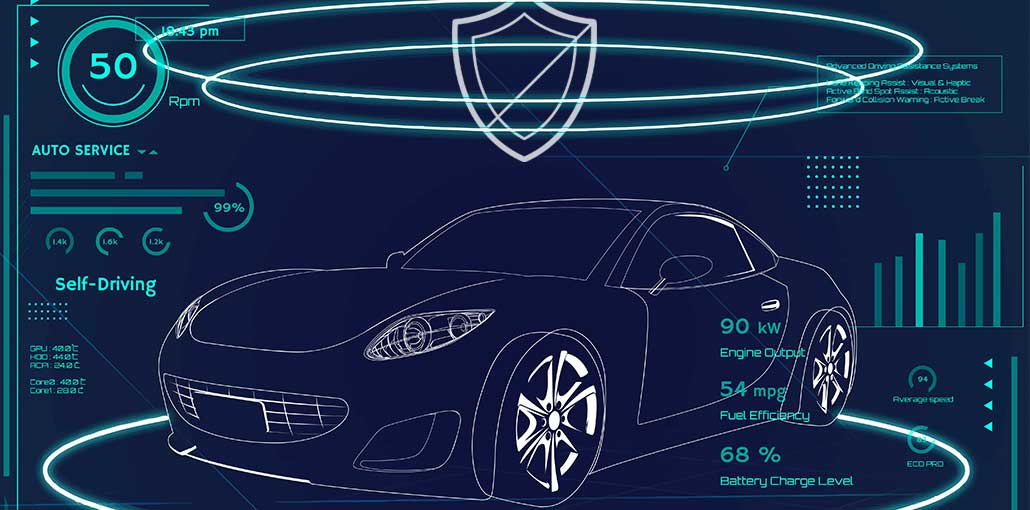As the world becomes increasingly connected, so too do our vehicles. More and more cars are being equipped with advanced connectivity features that allow them to communicate with other devices and systems – both inside and outside of the vehicle. This increased connectivity has made cars more convenient, efficient, and safe. Unfortunately, however, it has also made them more vulnerable to cyberattacks.
In recent years, there have been a number of high-profile cases of automotive cybersecurity breaches. For example, in 2015, Chrysler was forced to recall 1.4 million vehicles after it was discovered that hackers could gain control of certain Jeep models via the car’s entertainment system. In 2016, Tesla had to fix a flaw that allowed hackers to take control of its Model S cars remotely.
These incidents have brought increased attention to the issue of automotive cybersecurity. As more and more cars become equipped with advanced connectivity features, it’s only going to become more important. In this article, we’re going to take a look at the rise of automotive cybersecurity and what it means for the future of the car industry.
Explaining Automotive Cybersecurity – An Overview
The term automotive cybersecurity refers to the security of a vehicle’s electronic systems against unauthorized access or manipulation. This can include everything from the car’s infotainment system and onboard computers to its brakes, steering, and engine.
As cars become more and more advanced, they are increasingly reliant on computers and other electronic systems. This makes them vulnerable to the same kinds of cyberattacks that have been targeting traditional computer systems for years. Hackers can use a variety of methods to gain access to a car’s electronic systems, including wired and wireless connections. Once they have gained access, they can then manipulate the systems for their own purposes.
Namely, automotive cybersecurity is a relatively new field, yet it is already becoming an important area of concern for both the car industry and consumers. This is due to the fact that automotive cybersecurity breaches can have serious consequences.
For example, a hacker who gains control of a car’s brakes could cause a serious accident. A hacker could also disable a car’s engine while it is in motion, potentially causing it to crash. In addition, hackers could use a car’s infotainment system to access sensitive personal data, such as credit card numbers or home addresses.
Automotive Cyber Attack Methods
There are a number of different ways that hackers can gain access to a car’s electronic systems. Let’s take a look at the most common ones:
Using The OBD Port
The most common method is via a wired or wireless connection to the car’s onboard diagnostics (OBD) port. This port is usually used by mechanics and automakers to diagnose problems with a vehicle’s electronic systems. However, it can also be used by hackers to gain access to those same systems.
Using Malicious Software
Another common method of attack is through the use of malicious software, such as viruses and worms. These programs can be installed on a car’s infotainment system or other connected devices, such as smartphones. Once they are installed, they can be used to gain access to the car’s electronic systems.
Using Physical Devices
Finally, hackers can also gain access to a car’s electronic systems through the use of physical devices, such as USB sticks or SD cards. These devices can be used to introduce malicious software into the car’s infotainment system. Alternatively, they can be used to directly manipulate the car’s electronic systems.
Also read: 15 Types of Software Become a Cybersecurity Threat
The Importance of Automotive Cybersecurity
As cars become more and more reliant on electronic systems, the importance of automotive cybersecurity will only continue to grow. This is due to the fact that automotive cybersecurity breaches can have serious consequences.
In addition to the potential for physical harm, automotive cybersecurity breaches can also have a significant financial impact. This is because repairs or replacements of damaged electronic systems can be very costly. In some cases, the cost of a single automotive cybersecurity breach could exceed the value of the car itself.
Conclusion
In conclusion, the rise of automotive cybersecurity is a trend that is likely to continue in the years to come. This is because cars are becoming increasingly reliant on electronic systems. As a result, the potential consequences of a security breach are becoming more and more serious. Consequently, it is important for both automakers and consumers to be aware of the importance of automotive cybersecurity and to take steps to protect themselves.










Leave a comment